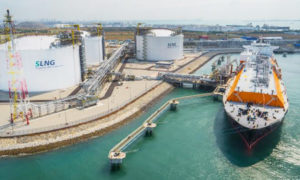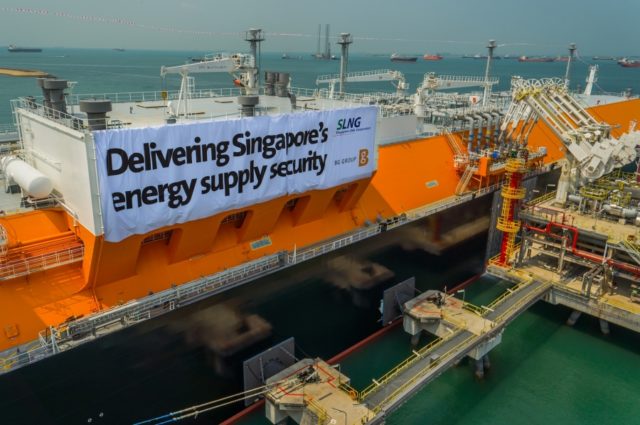Singapore, 22 Jan 2018 – Singapore’s liquefied natural gas (LNG) terminal has completed a recent expansion and now has enough capacity to meet the city-state’s total gas demand, without factoring in imports of natural gas through pipes.
The five-year-old terminal is also retooling itself in various ways to serve the evolving LNG market, ahead of an anticipated take-off in LNG trading, bunkering, and small-scale LNG businesses.
Singapore LNG Corporation’s (SLNG) terminal has completed its third phase of expansion of its regasification facilities last September, bringing its regasification capacity from six to 11 million tonnes.
The amount of natural gas Singapore now consumes is equivalent to about nine million tonnes of LNG a year.
Some 77% of Singapore’s natural gas demand is currently piped in from Malaysia and Indonesia. The six contracts for these expire between this year and 2029 (see table), and it is not yet clear whether they will be renewed.
Expiring soon
Singapore’s piped natural gas imports
| IMPORTED FROM | COMPANY | START YEAR | END YEAR | BCM |
| Malaysia | Senoko Energy | 2008 | 2018 | 1.260 |
| Malaysia | Keppel Gas | 2014 | 2022 | 0.471 |
| Indonesia | Sembcorp Gas | 2001 | 2023 | 3.409 |
| Indonesia | Gas supply | 2003 | 2023 | 3.405 |
| Malaysia | Keppel Gas | 2006 | 2024 | 1.259 |
| Indonesia | Sembcorp Gas | 2011 | 2029 | 0.911 |
The LNG terminal is currently using only 2.5 million tonnes of its regasification capacity. But while the terminal has excess regasification capacity, it is using almost all of its storage capacity, and its two jetties.
SLNG has three storage tanks with about 540,000 cubic metres in capacity. These are fully utilised by its regasification customers as well as those tapping its storage and reload services – mainly traders which bring in cargoes for storage and reload them onto another vessel at the appropriate time.
The terminal is now building a fourth storage tank with a capacity of 260,000 cubic metres. This will be completed in the Q2 or Q3 of this year. SLNG is looking for customers to use the fourth tank, and sees market interest from LNG traders.
At the same time, the terminal’s jetties are well used too because they serve ships performing various functions.
Besides customers conducting regasification and those using its storage and reload services, SLNG is active in performing cool-down services. This involves helping LNG ships, whether newly built or repaired, to cool down their tanks before they load their LNG cargos; they make use of free berthing slots at the jetties.
The terminal handled 54 vessels last year, comprising 31 which made use of its regasification throughput services, and 23 for its ancillary services.
SLNG is currently modifying its secondary jetty – initially designed for vessels from 60,000-265,000 cubic metres in size – to accommodate smaller ships of 2,000 to 10,000 cubic metres, so as to better ride on growth of small-scale LNG in future. This is expected to be completed next year.

Small vessels are expected to be used in two ways: one is to send LNG into the region after breakbulking, and the other is for ship-to-ship LNG bunkering.
In the future with the International Maritime Organisation imposing a 0.5% sulphur cap for marine fuels by 2020, many LNG – fuelled vessels are to be expected.
SLNG is also building a nitrogen blending facility to provide its customers more flexibility; this will be completed in the second or third quarter of this year, too.
Even as the terminal develops its ancillary services, regasification will remain SLNG’s primary business and focus because it is about Singapore’s energy security.




































